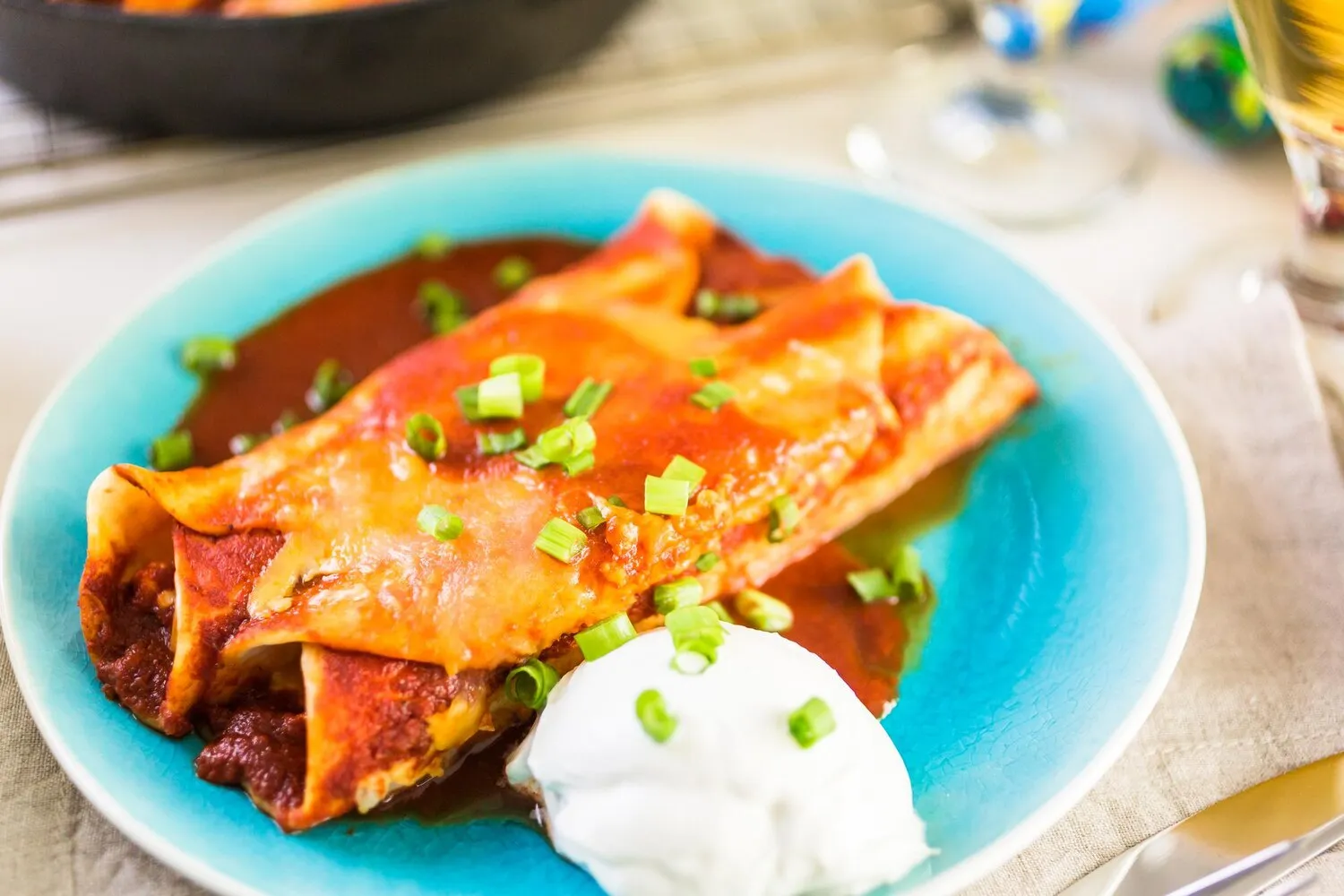
Enchiladas
Corn tortillas filled with a savory filling and covered with sauce and cheese.
Nutrition Facts
* The % Daily Value (DV) tells you how much a nutrient in a serving of food contributes to a daily diet. 2,000 calories a day is used for general nutrition advice.
Enchiladas have a long history in Mexico, originating from the Mayan civilization where corn tortillas were used to wrap small fish. Over time, the dish evolved, incorporating various fillings and sauces as the cuisine developed through indigenous and Spanish influences. The modern enchilada, with its characteristic sauce and cheese, is a product of centuries of culinary innovation.
Enchiladas are a staple of Mexican cuisine and hold significant cultural importance. They are often served during celebrations, family gatherings, and festive occasions, reflecting the dish's role in bringing people together.
Family Traditions
Enchiladas are often made at home following family recipes passed down through generations. Each family may have their own unique variation on the dish, reflecting their regional culinary traditions.
Festive Occasions
Enchiladas are a popular dish for celebrations like birthdays, holidays (especially Christmas and Mexican Independence Day), and other special events. They are often made in large quantities to feed a crowd.
Regional Variations
Different regions of Mexico have their own distinct styles of enchiladas. For example, in Oaxaca, enchiladas are often filled with chicken and covered in mole sauce, while in other regions, they might be filled with cheese and covered in a red chili sauce.
Enchiladas offer a diverse range of flavors, dependent on the filling, sauce, and cheese used. Common flavor profiles include savory, spicy, tangy, and cheesy, often with a hint of smokiness.
The savory element comes from the fillings, which can be anything from shredded chicken, beef, or pork to cheese, beans, or vegetables. Spice is introduced through the chili-based sauce, which can range from mild to very hot. A tangy flavor is sometimes present, particularly in tomatillo-based sauces. Finally, the cheese adds a creamy and rich element to the dish. Common spices include cumin, oregano, chili powder, and garlic, adding depth and complexity to the overall flavor.
Tortilla Softening
To prevent tortillas from cracking, lightly fry them in oil for a few seconds on each side, or steam them to make them pliable. This step is crucial for easy rolling and a better overall texture.
Sauce Consistency
Ensure the enchilada sauce is not too thick or too thin. A properly balanced sauce will coat the tortillas evenly without making them soggy. Adjust the consistency with broth or tomato sauce if needed.
Cheese Selection
Use a cheese that melts well, such as Monterey Jack, Oaxaca, or a Mexican cheese blend. This will create a gooey and delicious topping for your enchiladas. Queso fresco can be added as a fresh topping after baking as well.
Explore additional Enchiladas dishes and restaurants
Explore EnchiladasDiscover top dining spots and culinary experiences in Bayonne.
Explore BayonneLearn more about the food culture, restaurant scene, and culinary heritage of United States.
Explore United States